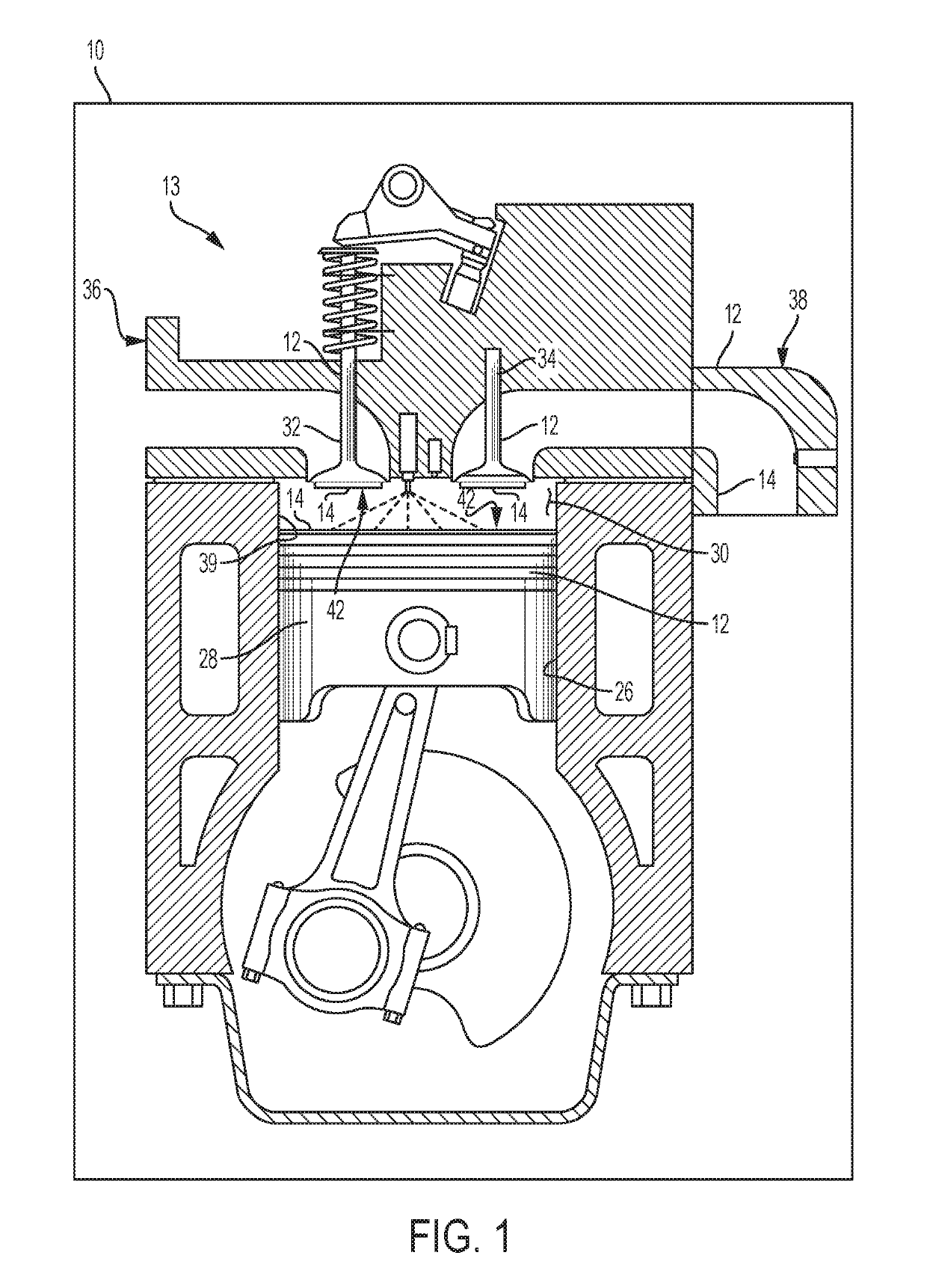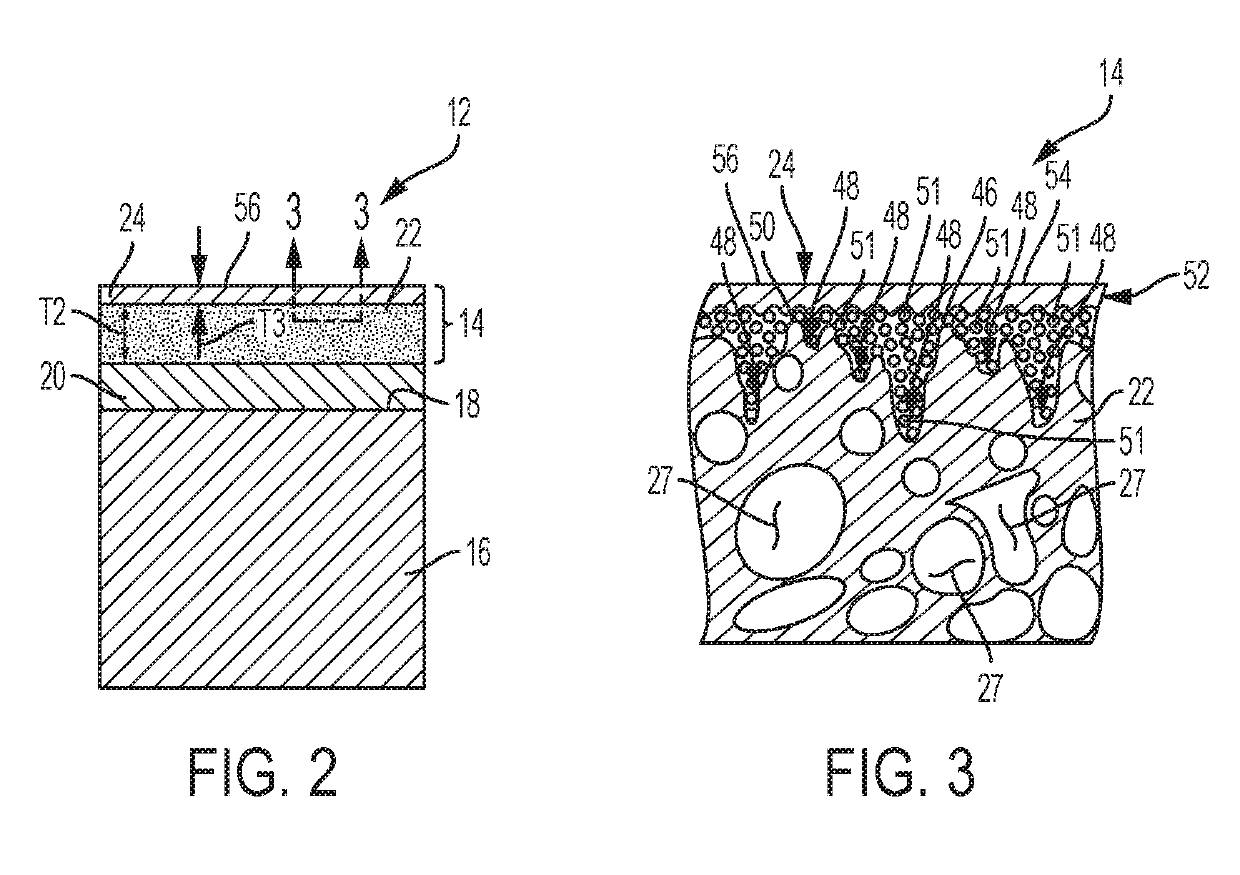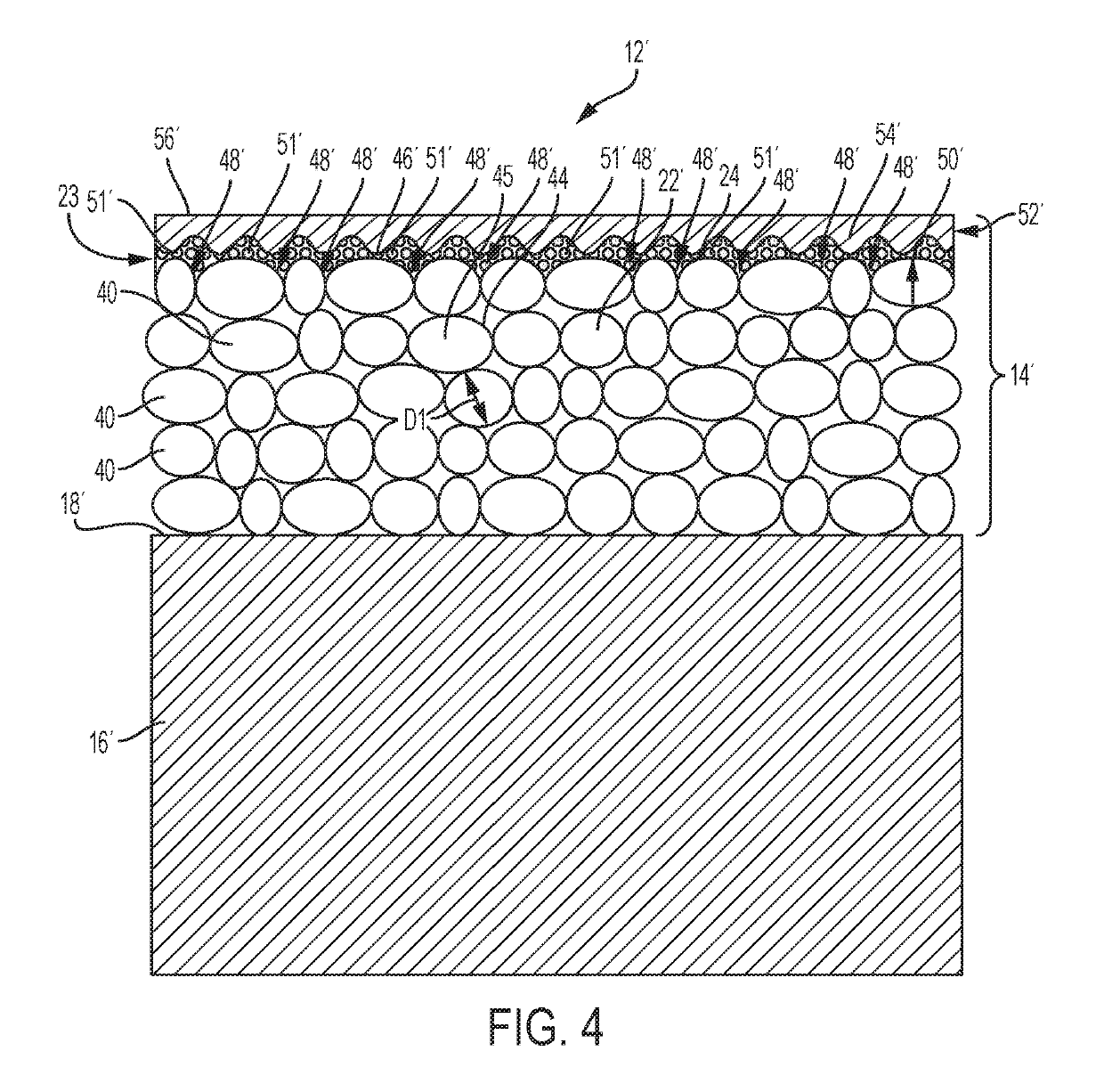Gap-filling sealing layer of thermal barrier coating
a technology of thermal barrier coating and gap filling, which is applied in the direction of superimposed coating process, coating, chemistry apparatus and processes, etc., can solve the problem of sealing layer breaking off, and achieve the effect of robust surface conta
- Summary
- Abstract
- Description
- Claims
- Application Information
AI Technical Summary
Benefits of technology
Problems solved by technology
Method used
Image
Examples
Embodiment Construction
[0022]Those having ordinary skill in the art will recognize that terms such as “above,”“below,”“upward,”“downward,”“top,”“bottom,” etc., are used descriptively for the figures, and do not represent limitations on the scope of the disclosure, as defined by the appended claims.
[0023]Referring to the drawings, wherein like reference numbers refer to like components throughout the views, FIG. 1 shows a portion of an example vehicle propulsion system 10 that includes an engine 13 having a component 12. The component 12 has a thermal barrier “coating” (TBC) 14 of the type disclosed herein, applied thereto. The thermal barrier coating 14 may be referred to as a composite thermal barrier coating or multi-layer thermal barrier in forms that have multiple layers bonded together. For example, the TBC 14 may be an engineered surface comprised of a plurality of layers, which is described in further detail below.
[0024]While the engine 13 of FIG. 1 is a typical example application suitable for the...
PUM
| Property | Measurement | Unit |
|---|---|---|
| width | aaaaa | aaaaa |
| thickness | aaaaa | aaaaa |
| thickness | aaaaa | aaaaa |
Abstract
Description
Claims
Application Information
 Login to View More
Login to View More - R&D
- Intellectual Property
- Life Sciences
- Materials
- Tech Scout
- Unparalleled Data Quality
- Higher Quality Content
- 60% Fewer Hallucinations
Browse by: Latest US Patents, China's latest patents, Technical Efficacy Thesaurus, Application Domain, Technology Topic, Popular Technical Reports.
© 2025 PatSnap. All rights reserved.Legal|Privacy policy|Modern Slavery Act Transparency Statement|Sitemap|About US| Contact US: help@patsnap.com



